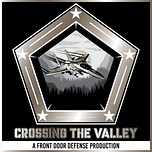This summer, Georgetown’s Center for Security and Emerging Technology (CSET) at Georgetown published the paper Building the Tech Coalition: How Project Maven and the U.S. 18th Airborne Corps Operationalized Software and Artificial Intelligence for the Department of Defense (check it out here).
Today’s episode dives deep into the case, highlighting a crucial illustration of successful defense innovation.
Our Guests
Emelia (Emmy) Probasco is a Senior Fellow at CSET, where she works on the military applications of Artificial Intelligence. At the same time, she’s a special government employee advising the Defense Innovation Unit. She’s been the Chief Communications Officer and Communications Department Head at the Johns Hopkins Applied Physics Laboratory (APL), and a Surface Warfare Officer in the U.S. Navy, deploying twice to the Indo-Pacific. She also served in the Pentagon as the speechwriter to the Chief of Naval Operations and at the U.S. Naval Academy as an instructor in political science. Oh, and she’s also a former Rhodes Scholar.
Along with Emmy, we have US Army Col Joe O’Callaghan, the AI Fires Officer for the Army’s 18th Airborne Corps. In this assignment he oversees the Corps Joint Fires and Targeting Enterprise and is the Corps subject matter expert on Algorithmic Warfare. He has led both in both Airborne howitzer and Rocket Artillery units in combat and operational deployments and has served as a rated Special Operations Terminal Attack Controller.
About the Episode
I was excited to see CSET’s work because despite its notoriety, the story of Project Maven has largely gone untold. Emmy does it masterfully. This program was truly the fulcrum of change for the department — it spanned the “pre-modern software” and “more modern software” eras, and was one of the first meaningful initiatives to bring in nontraditional companies at scale, and engage them differently.
The key to the whole thing was the iterative, adaptive approach.
They didn’t put one company under contract to “deliver AI” (as the government might have done 10 years ago).
Instead, they architected a different approach.
They brought on flexible primes, that could quickly onboard (and offload) new vendors.
They fostered competition.
They deployed capabilities in exercises and used performance to make quick decisions.
And they built an acquisition apparatus in support of the mission - not in spite of it.
The program is far from perfect, but it stands as a crucial example of defense modernization, and is an essential case study for anyone wishing to see how new capabilities might get developed, and deployed for America’s Armed Forces.
Some Key Lessons
Live testing is crucial for successful integration of technology. The integration via Scarlet Dragon took an experiential approach to capability development and delivery, focusing on how technology could be integrated to deliver decisions for commanders.
New flavors of collaboration between industry and military are the key. Project Maven's success relied on close collaboration between industry partners and military personnel. Engineers from various companies worked side-by-side with soldiers to understand their needs and develop solutions that could be rapidly integrated and deployed.
Flexibility in contracting vehicles enables rapid innovation. The use of Broad Agency Announcements (BAAs) allowed the 18th Airborne Corps to rapidly engage with different industry partners, conduct quick down-selects, and integrate new capabilities into Project Maven. This flexibility was critical for adapting to emerging technologies and changing requirements.
Software development requires a different approach than hardware. Traditional acquisition processes, which work well for hardware like tanks and howitzers, are not as effective for software development. Software requires close collaboration between users and developers, as well as the ability to rapidly iterate and integrate new capabilities.
Sustained funding and support are necessary for long-term success. Project Maven's success has led to increased demand for its capabilities, but sustained funding is needed to support the program's growth and continued development. As the DoD moves towards data-centric warfare, it will need to figure out how to budget for compute resources, which are becoming the new "jet fuel" for military operations.
Subscribe to Frontdoor’s Substack and YouTube to never miss an episode!












Ep 22: How Project Maven Delivered AI to the Army